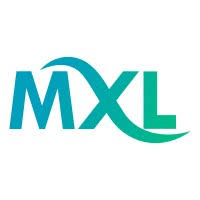
Robinjasper1109
Uploaded on Aug 12, 2025
In a corporate world that demands continuous upskilling and an agile workforce, microlearning has emerged as a powerful solution. The concept is simple and compelling: deliver training in short, focused bursts that align with the pace of modern work. However, the true promise of microlearning isn't realized by simply creating bite-sized content. To achieve genuine employee success, organizations must approach it with a strategic, deliberate mindset. This article outlines the key strategies for getting microlearning done right, ensuring your training initiatives lead to tangible performance improvements and a more skilled, confident workforce. 1. Move Beyond "Bite-Sized" Thinking The most common misconception about microlearning is that it’s just about making content shorter. While brevity is a core component, a successful strategy is built on a deeper foundation: precision. Every microlearning piece must have a singular, unambiguous learning objective. It's a fundamental shift from teaching a broad topic to solving a specific performance problem. For a team in the Finance sector, the goal isn't just to "understand new regulations," but to "correctly identify the three key changes in the latest compliance update." In the Banking industry, instead of a module on "customer service," a microlearning snippet should focus on a specific skill, such as "how to de-escalate a difficult customer conversation." This laser-focus ensures that the content is not only concise but also immediately relevant and actionable. 2. The Strategy of Singular Focus To do microlearning right, you must design each piece of content around a single learning outcome. This singular focus prevents cognitive overload and significantly improves knowledge retention. Consider a professional in the Health care field. A training module wouldn't cover all "patient intake procedures." Instead, a series of Microlearning Courses would be created, each dedicated to a single task, such as "the proper way to verify a patient's insurance card" or "the five key questions to ask a new patient." For a Retail associate, this means a short video on "how to open a specific product box" rather than a broad overview of product handling. This design strategy ensures that employees learn one thing well before moving on to the next. 3. The Power of Context and Accessibility The value of microlearning done right lies in its ability to provide knowledge at the precise moment it is needed. Training is most effective when it is directly connected to the work being performed. A robust microlearning platform and a mobile-friendly microlearning application are crucial for this. These tools allow employees to access training "just-in-time," turning a mobile device into a powerful performance support tool. For a worker in the Mining industry, a mobile app can provide a quick video on the safety checks for a specific piece of equipment right at the worksite. In the Oil and Gas sector, a field technician can access a troubleshooting guide for a machine in a matter of seconds, minimizing downtime and boosting productivity. This contextual learning is a key driver of employee success. 4. The Technology That Delivers Success A strategic approach to microlearning requires a sophisticated technological ecosystem. The best Microlearning Tools and microlearning software work together to streamline content creation, personalization, and management. First, advanced microlearning authoring tools allow L&D teams to rapidly produce engaging content. An AI-powered Authoring Tool takes this a step further, using machine learning to convert existing long-form content into structured, interactive microlearning snippets, drastically accelerating content production. Second, an intelligent AI-Powered Learning Platform can personalize the learning experience, recommending the most relevant microlearning courses to employees based on their roles, performance data, and identified skill gaps. This targeted approach ensures that training is highly efficient and impactful. 5. Reinforcement and Measurement Are Non-Negotiable Microlearning done right doesn’t end with content delivery. To ensure long-term employee success, you must plan for knowledge reinforcement and a way to measure the impact of your training. A powerful Microlearning LMS (Learning Management System) is designed to handle this. It can automate the delivery of follow-up quizzes or short refreshers at optimal intervals to combat the "forgetting curve." The Microlearning LMS also provides the deep analytics needed to track not just completion rates, but the direct correlation between training and performance outcomes. For the Insurance sector, this means being able to link the completion of a micro-module on new policy features with an increase in sales conversions. For a company in the Pharma industry, it means a more knowledgeable and confident sales force. By prioritizing this final step, you prove the strategic value of your microlearning initiative and set a clear path for continuous improvement.

Comments